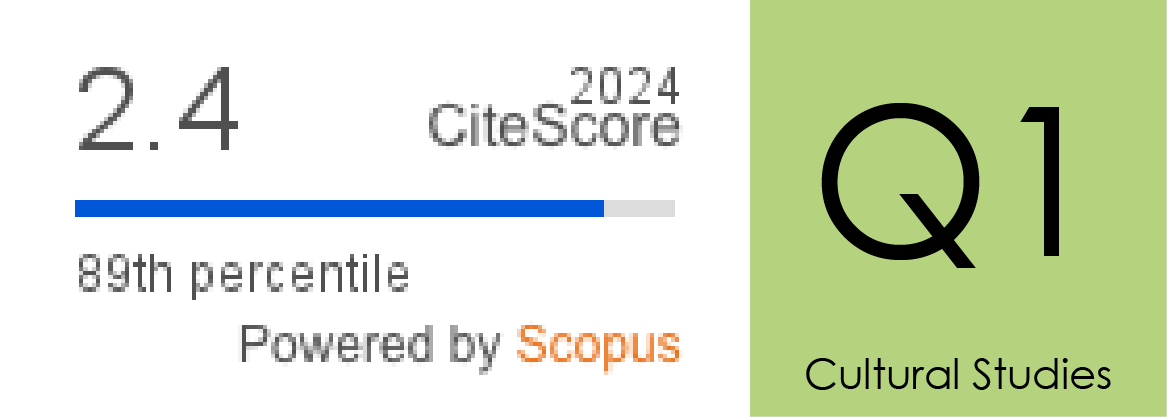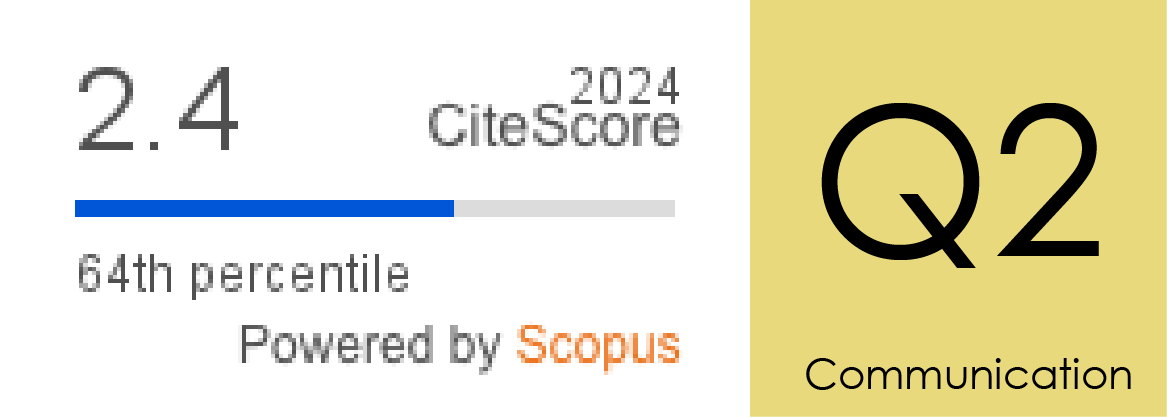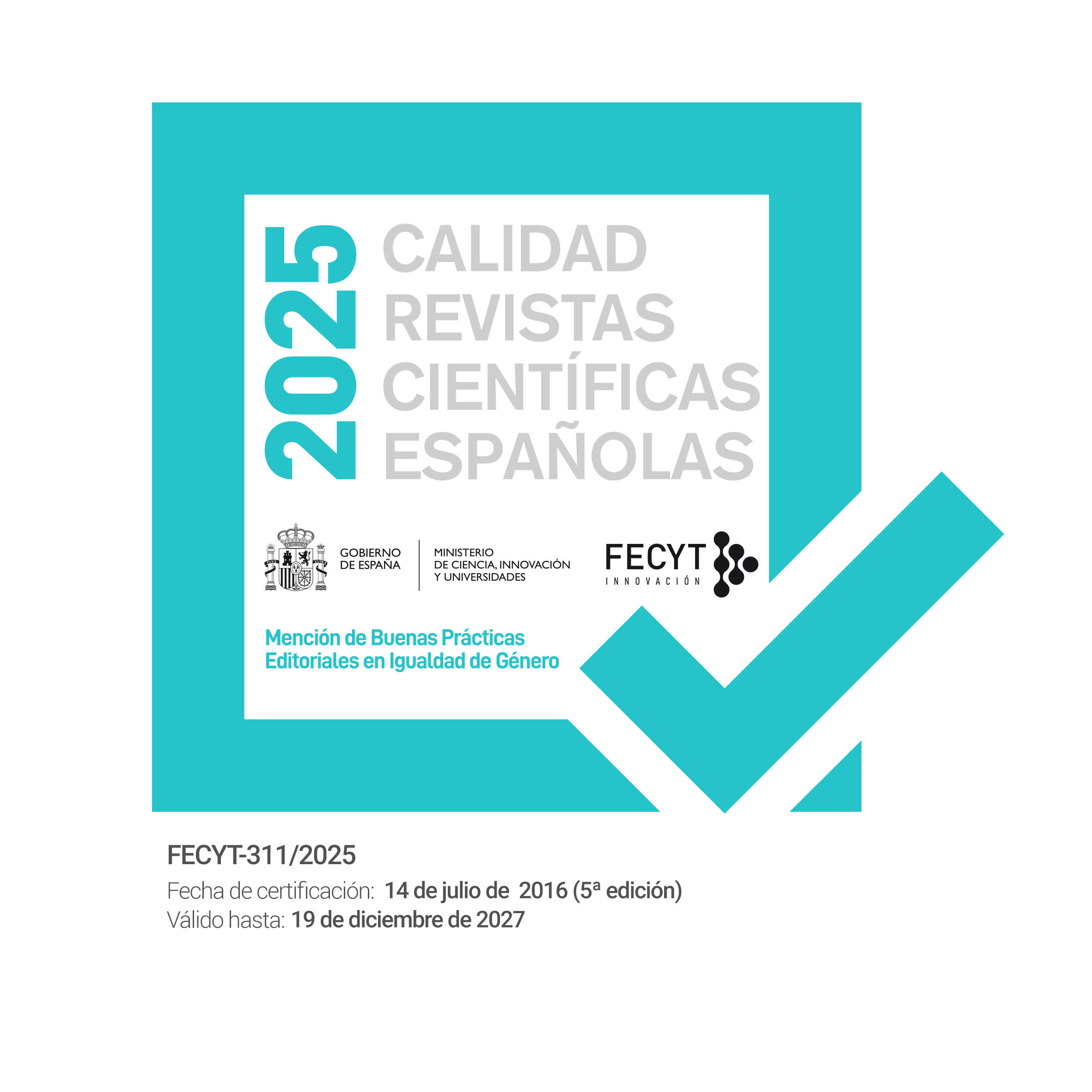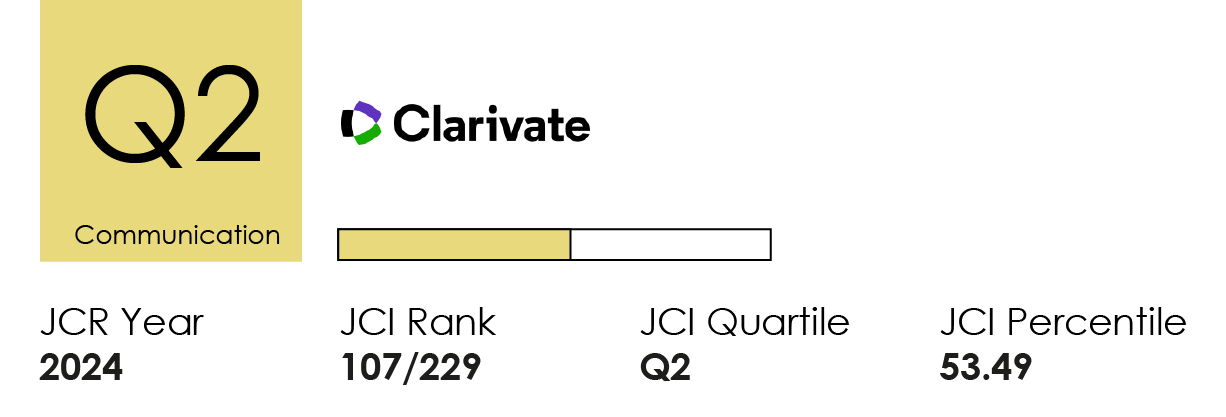No solo influencers en el plan de comunicación: un estudio comparativo en el mundo de la moda
DOI:
https://doi.org/10.14198/MEDCOM.23717Palabras clave:
influencers, communication plan, fashion, influentials, consumerResumen
En los últimos años, las redes sociales e influencers están dominando las campañas de comunicación, debido a su poder de influencia en los consumidores. Como resultado, algunos de los actores tradicionales de la comunicación no están siendo considerados en los planes de comunicación. Sin embargo, no existe ningún estudio que confirme su pérdida de influencia sobre el consumidor y sus decisiones de compra. Tomando el caso de la compra en moda, el objetivo de este artículo es comparar el poder de influencia de siete actores de la comunicación: medios, marcas de moda, celebridades, influencers (mega, macro y micro) e influyentes. Con datos de 1176 cuestionarios respondidos a través del método de autodenominación, podemos concluir que los influencers son superados por los influyentes (círculos cercanos) como los líderes de opinión con mayor impacto en el consumidor, seguidos incluso por las marcas de moda y los medios de moda.
Citas
Agnihotri, A., & Bhattacharya, S. (2021). Endorsement Effectiveness of Celebrities versus Social Media Influencers in the Materialistic Cultural Environment of India. Journal of International Consumer Marketing, 33(3), 280-302. https://doi.org/10.1080/08961530.2020.1786875
Ahuja, N. (2015). Effect of branding on consumer buying behaviour: A study in relation to fashion industry. International Journal of Research in Humanities & Social Sciences, 3(2), 32-37.
Allen, E. C., & Collisson, B. (2020). Do aspirational role models inspire or backfire? Perceived similarity mediates the effect of role models on minority students’ college choices. Journal of Marketing for Higher Education, 30(2), 221–238. https://doi.org/10.1080/08841241.2020.1723780
Andersen, P., Weisstein, F. L., & Song, L. (2020). Consumer response to marketing channels: A demand-based approach. Journal of Marketing Channels, 26(1), 43–59. https://doi.org/10.1080/1046669x.2019.1657736
Arnesson, J. (2022). ‘Endorsing a dictatorship and getting paid for it’: Discursive struggles over intimacy and authenticity in the politicisation of influencer collaborations. New media & Society. https://doi.org/10.1177/14614448211064302
Anspach, K. A. (1967). The why of fashion. Iowa State University Press.
Apeagyei, P. R. (2011). The impact of image on emerging consumers of fashion. International Journal of Management Cases, 13(4), 242-251.
Atik, D., & Fırat, A. F. (2013). Fashion creation and diffusion: The institution of marketing. Journal of Marketing Management, 29(7-8), 836-860. https://doi.org/10.1080/0267257X.2012.729073
Bailey, L. R., & Seock, Y. (2010). The relationships of fashion leadership, fashion magazine content and loyalty tendency. Journal of Fashion Marketing and Management, 14(1), 39-57. https://doi.org/10.1108/13612021011025429
Bell, B. T., & Dittmar, H. (2011). Does media type matter? The role of identification in adolescent girls’ media consumption and the impact of different thin-ideal media on body image. Sex roles, 65(7), 478-490.
https://doi.org/10.1007/s11199-011-9964-x
Boerman, S. C. (2020). The effects of the standardized Instagram disclosure for micro-and meso-influencers. Computers in Human Behavior, 103, 199–207. https://doi.org/10.1016/j.chb.2019.09.015
Borchers, N. (2019). Social Media Influencers in Strategic Communication. International Journal of Strategic Communication, 13(4), 255–260. https://doi.org/10.1080/1553118X.2019.1634075
Britt, R. K., Hayes, J. L., Britt, B. C., & Park, H. (2020). Too big to sell? A computational analysis of network and content characteristics among mega and micro beauty and fashion social media influencers. Journal of Interactive Advertising, 20(2), 111–118. https://doi.org/10.1080/15252019.2020.1763873
Cabosky, J. (2016). Social media opinion sharing: beyond volume. Journal of Consumer Marketing, 33(3), 172–181. https://doi.org/10.1108/JCM-02-2015-1323
Cao, P., Meister, S., & Klante, O. (2014). How social media influence apparel purchasing behavior. Marketing Review St. Gallen, 31(6), 77-86. https://doi.org/10.1365/s11621-014-0427-y
Casaló, L. V., Flavián, C., & Ibáñez-Sánchez, S. (2020). Influencers on Instagram: Antecedents and consequences of opinion leadership. Journal of Business Research, 117, 510–519. https://doi.org/10.1016/j.jbusres.2018.07.005
Cotter, K. (2019). Playing the visibility game: How digital influencers and algorithms negotiate influence on Instagram. New Media & Society, 21(4), 895–913. https://doi.org/10.1177/1461444818815684
Cho, V., & Chan, D. (2021). How social influence through information adoption from online review sites affects collective decision making. Enterprise Information Systems, 15(10), 1562-1586. https://doi.org/10.1080/17517575.2019.1651398
Chopra, A., Avhad, V., & Jaju, A. S. (2021). Influencer marketing: An exploratory study to identify antecedents of consumer behavior of millennial. Business Perspectives and Research, 9(1), 77-91. https://doi.org/10.1177/2278533720923486
Curiel, C. P., & Alarcón, E. V. (2022). Emprender y comunicar en moda. Nuevos formatos, influencers y públicos. In G. Jiménez-Marín, & R. Elías Zambrano (Eds.), Emprender en comunicación (pp. 203-212). Pirámide.
Djafarova, E., & Rushworth, C. (2017). Exploring the credibility of online celebrities’ Instagram profiles in influencing the purchase decisions of young female users. Computers in Human Behavior, 68, 1–7. https://doi.org/10.1016/j.chb.2016.11.009
Djafarova, E., & Trofimenko, O. (2019). ‘Instafamous’–credibility and self-presentation of micro-celebrities on social media. Information, communication & society, 22(10), 1432-1446. https://doi.org/10.1080/1369118X.2018.1438491
Doyle, J. P., Su, Y., & Kunkel, T. (2020). Athlete branding via social media: examining the factors influencing consumer engagement on Instagram. European Sport Management Quarterly, 1–21. https://doi.org/10.1080/16184742.2020.1806897
Enke, N., & Borchers, N. S. (2019). Social Media Influencers in Strategic Communication: A Conceptual Framework for Strategic Social Media Influencer Communication. International Journal of Strategic Communication, 13(4), 261–277. https://doi.org/10.1080/1553118X.2019.1620234
Godey, B., Manthiou, A., Pederzoli, D., Rokka, J., Aiello, G., Donvito, R., & Singh, R. (2016). Social media marketing efforts of luxury brands: Influence on brand equity and consumer behavior. Journal of business research, 69(12), 5833-5841. https://doi.org/10.1016/j.jbusres.2016.04.181
Good, M. C., & Hyman, M. R. (2020). ‘Fear of missing out’: antecedents and influence on purchase likelihood. Journal of Marketing Theory and Practice, 28(3), 330-341. https://doi.org/10.1080/10696679.2020.1766359
Grau, S., Kleiser, S., & Bright, L. (2019). Exploring social media addiction among student Millennials. Qualitative Market Research: An International Journal, 22(2), 200-216. https://doi.org/10.1108/QMR-02-2017-0058
Gupta, S., & Mahajan, R. (2019). Role of Micro-Influencers in Affecting Behavioural Intentions. International Journal of Recent Technology and Engineering, 8, 189-192. https://doi.org/10.35940/ijrte.D1045.1284S519
Halvorsen, K., Hoffmann, J., Coste-Manière, I., & Stankeviciute, R. (2013). Can fashion blogs function as a marketing tool to influence consumer behavior? Evidence from Norway. Journal of Global Fashion Marketing, 4(3), 211–224. https://doi.org/10.1080/20932685.2013.790707
Harrison, K., & Cantor, J. (1997). The relationship between media consumption and eating disorders. Journal of communication, 47(1), 40-67. https://doi.org/10.1111/j.1460-2466.1997.tb02692.x
Hasan, M., & Sohail, M. S. (2020). The Influence of Social Media Marketing on Consumers’ Purchase Decision: Investigating the Effects of Local and Nonlocal Brands. Journal of International Consumer Marketing, 1–18. https://doi.org/10.1080/08961530.2020.1795043
Hui, S. L., & Yee, R. W. (2015). Relationship among Interpersonal Relationship, Customer Satisfaction and Brand Loyalty in Fashion Retailing Industry. Research Journal of Textile and Apparel, 19(1), 65-72. https://doi.org/10.1108/RJTA-19-01-2015-B007
Jin, S. A., & Phua, J. (2014). Following celebrities’ tweets about brands: The impact of twitter-based electronic word-of-mouth on consumers’ source credibility perception, buying intention, and social identification with celebrities. Journal of advertising, 43(2), 181-195. https://doi.org/10.1080/00913367.2013.827606
Jungnickel, K. (2018). New methods of measuring opinion leadership: a systematic, interdisciplinary literature analysis. International Journal of Communication, 12, 2702–2724.
Kalbaska, N., Sádaba, T., & Cantoni, L. (2018). Fashion communication: Between tradition and digital transformation. Studies in Communication Sciences, 18(2), 269-285. https://doi.org/10.24434/j.scoms.2018.02.005
Katz, E., & Lazarsfeld, P. F. (1955). Personal Influence. Transaction Publishers.
Kay, S., Mulcahy, R., & Parkinson, J. (2020). When less is more: the impact of macro and micro social media influencers’ disclosure. Journal of Marketing Management, 36(3–4), 248–278. https://doi.org/10.1080/0267257X.2020.1718740
Keller, E., & Fay, B. (2016). How to use influencers to drive a word-of-mouth strategy. Warc Best Practice, 1, 2–8.
Keller, E., & Berry, J. (2003). The influentials: One American in ten tells the other nine how to vote, where to eat, and what to buy. Simon and Schuster.
Khamis, S., Ang, L., & Welling, R. (2017). Self-branding, ‘micro-celebrity’ and the rise of Social Media Influencers. Celebrity Studies, 8(2), 191–208. https://doi.org/10.1080/19392397.2016.1218292
Kim, J., & Kim, J. (2012). Human factors in retail environments: a review. International Journal of Retail and Distribution Management, 40(11), 818–841. https://doi.org/10.1108/09590551211267593
Kotler, P., Kartajaya, H., & Setiawan, I. (2016). Marketing 4.0: Moving from traditional to digital. John Wiley & Sons.
Lam, Y. W., & Yee, R. W. (2014). Antecedents and consequences of fashion consciousness: An empirical study in Hong Kong. Research Journal of Textile and Apparel, 18(4), 62-69. https://doi.org/10.1108/RJTA-18-04-2014-B007
Lee, J. A., & Eastin, M. S. (2020). I like what she’s #endorsing: the impact of female social media influencers’ perceived sincerity, consumer envy, and product type. Journal of Interactive Advertising, 20(1), 76–91. https://doi.org/10.1080/15252019.2020.1737849
Lee, S., & Kim, E. (2020). Influencer marketing on Instagram: How sponsorship disclosure, influencer credibility, and brand credibility impact the effectiveness of Instagram promotional post. Journal of Global Fashion Marketing, 11(3), 232–249. https://doi.org/10.1080/20932685.2020.1752766
Li, Y.-M., Lai, C.-Y., & Chen, C.-W. (2011). Discovering influencers for marketing in the blogosphere. Information Sciences, 181(23), 5143–5157. https://doi.org/10.1016/j.ins.2011.07.023
Lou, C., & Yuan, S. (2019). Influencer Marketing: How Message Value and Credibility Affect Consumer Trust of Branded Content on Social Media. Journal of Interactive Advertising, 19(1), 58–73. https://doi.org/10.1080/15252019.2018.1533501
Lou, C., Ma, W., & Feng, Y. (2020). A Sponsorship Disclosure is Not Enough? How Advertising Literacy Intervention Affects Consumer Reactions to Sponsored Influencer Posts. Journal of Promotion Management, 1–28. https://doi.org/10.1080/10496491.2020.1829771
Luoma-aho, V., Pirttimäki, T., Maity, D., Munnukka, J., & Reinikainen, H. (2019). Primed Authenticity: How Priming Impacts Authenticity Perception of Social Media Influencers. International Journal of Strategic Communication, 13(4), 352–365. https://doi.org/10.1080/1553118X.2019.1617716
Manthiou, A., Chiang, L., & Tang, L. R. (2013). Identifying and responding to customer needs on Facebook fan pages. International Journal of Technology and Human Interaction (IJTHI), 9(3), 36-52. https://doi.org/10.4018/jthi.2013070103
Martínez-López, F. J., Anaya-Sánchez, R., Fernández Giordano, M., & Lopez-Lopez, D. (2020a). Behind influencer marketing: key marketing decisions and their effects on followers’ responses. Journal of Marketing Management, 36(7-8), 579-607. https://doi.org/10.1080/0267257X.2020.1738525
Martínez-López, F. J., Anaya-Sánchez, R., Esteban-Millat, I., Torrez-Meruvia, H., D’Alessandro, S., & Miles, M. (2020b). Influencer marketing: brand control, commercial orientation and post credibility. Journal of Marketing Management, 1–27. https://doi.org/10.1080/0267257X.2020.1806906
Moraes, M., Gountas, J., Gountas, S., & Sharma, P. (2019). Celebrity influences on consumer decision making: new insights and research directions. Journal of Marketing Management, 35(13–14), 1159–1192. https://doi.org/10.1080/0267257X.2019.1632373
Morley, D. (2005). Theories of consumption in media studies. In D. Miller (Ed.), Acknowledging consumption (pp. 301-332). Routledge.
Muntinga, D. G., Moorman, M., & Smit, E. G. (2011). Introducing COBRAs: Exploring motivations for brand-related social media use. International Journal of advertising, 30(1), 13-46. https://doi.org/10.2501/IJA-30-1-013-046
Nejad, M. G., Sherrell, D. L., & Babakus, E. (2014). Influentials and influence mechanisms in new product diffusion: an integrative review. Journal of Marketing Theory and Practice, 22(2), 185–208. https://doi.org/10.2753/MTP1069-6679220212
Okonkwo, U. (2010). Luxury Online. Styles, Systems, Strategies. Palgrave Macmillan.
Osei-Frimpong, K., Donkor, G., & Owusu-Frimpong, N. (2019). The impact of celebrity endorsement on consumer purchase intention: An emerging market perspective. Journal of Marketing Theory and Practice, 27(1), 103–121. https://doi.org/10.1080/10696679.2018.1534070
Park, J., Lee, J. M., Xiong, V. Y., Septianto, F., & Seo, Y. (2021). David and Goliath: when and why micro-influencers are more persuasive than mega-influencers. Journal of Advertising, 50(5), 584-602. https://doi.org/10.1080/00913367.2021.1980470
Parrott, G., Danbury, A., & Kanthavanich, P. (2015). Online behaviour of luxury fashion brand advocates. Journal of Fashion Marketing and Management, 19(4), 360–383. https://doi.org/10.1108/JFMM-09-2014-0069
Pedroni, M. (2016). Meso-celebrities, fashion and the media: How digital influencers struggle for visibility. Film, fashion & consumption, 5(1), 103-121. https://doi.org/10.1386/ffc.5.1.103_1
Pedroni, M. (2022). Two Decades of Fashion Blogging and Influencing: A Critical Overview. Fashion Theory, 1-32. https://doi.org/10.1080/1362704X.2021.2017213
Perreault, G., & Hanusch, F. (2022). Field insurgency in lifestyle journalism: How lifestyle journalists marginalize Instagram influencers and protect their autonomy. New Media & Society. https://doi.org/10.1177/14614448221104233
Phuong, N. N. D., & Thao, N. T. (2017). The effect of materialism, self-monitoring, and media influence on fashion clothing involvement: a study among Vietnamese consumers. In Proceedings of the Annual Vietnam Academic Research Conference on Global Business, Economics, Finance & Management Sciences (pp. 1-15).
Pöyry, E., Pelkonen, M., Naumanen, E., & Laaksonen, S. M. (2019). A Call for Authenticity: Audience Responses to Social Media Influencer Endorsements in Strategic Communication. International Journal of Strategic Communication, 13(4), 336–351. https://doi.org/10.1080/1553118X.2019.1609965
Reinikainen, H., Munnukka, J., Maity, D., & Luoma-aho, V. (2020). ‘You really are a great big sister’–parasocial relationships, credibility, and the moderating role of audience comments in influencer marketing. Journal of Marketing Management, 36(3–4), 279–298. https://doi.org/10.1080/0267257X.2019.1708781
Russell, C. A., & Russell, D. R. (2017). Uncovering the power of natural endorsements: A comparison with celebrity-endorsed advertising and product placements. International Journal of Advertising, 36(5), 761–778. https://doi.org/10.1080/02650487.2017.1348033
Ryan, D., & Jones, C. (2009). Digital marketing: Marketing strategies for engaging the digital generation. Kogan page Ltd.
SanMiguel, P., & Sádaba, T. (2017). Nice to be a fashion blogger, hard to be influential. Journal of Global Fashion Marketing, 1–19. https://doi.org/10.1080/20932685.2017.1399082
SanMiguel, P., Guercini, S., & Sádaba, T. (2019). The impact of attitudes towards influencers amongst millennial fashion buyers. Studies in Communication Sciences, 18(2), 439–460. https://doi.org/10.24434/j.scoms.2018.02.016
Sanz-Marcos, P., Jiménez-Marín, G., & Elías Zambrano, R. (2021). Aplicación y uso del Modelo de Resonancia o Customer-Based Brand Equity (CBBE). Estudio de la lealtad de marca a través de la figura del influencer. Methaodos. revista de ciencias sociales, 9(2), 200-218. https://doi.org/10.17502/mrcs.v9i2.471
Shaw, J. (1995). Effects of fashion magazines on body dissatisfaction and eating psychopathology in adolescent and adult females. European Eating Disorders Review, 3(1), 15-23. https://doi.org/10.1002/erv.2400030105
Shephard, A., Pookulangara, S., Kinley, T. R., & Josiam, B.M. (2016). Media influence, fashion, and shopping: a gender perspective. Journal of Fashion Marketing and Management, 20(1), 4-18. https://doi.org/10.1108/JFMM-09-2014-0068
Silva, M. J. de B., Farias, S. A. de, Grigg, M. K., & Barbosa, M. de L. de A. (2020). Online Engagement and the Role of Digital Influencers in Product Endorsement on Instagram. Journal of Relationship Marketing, 19(2), 133–163. https://doi.org/10.1080/15332667.2019.1664872
Solis, B. (2010). Engage: The complete guide for brands and businesses to build, cultivate, and measure success in the new web. John Wiley & Sons.
Tang, Y., & Marinova, D. (2020). When less is more: the downside of customer knowledge sharing in new product development teams. Journal of the Academy of Marketing Science, 48(2), 288–307. https://doi.org/10.1007/s11747-019-00646-w
Trivedi, J., & Sama, R. (2020). The Effect of Influencer Marketing on Consumers’ Brand Admiration and Online Purchase Intentions. Journal of Internet Commerce, 19(1), 103–124. https://doi.org/10.1080/15332861.2019.1700741
Uzunoğlu, E., & Misci Kip, S. (2014). Brand communication through digital influencers: Leveraging blogger engagement. International Journal of Information Management, 34(5), 592–602. https://doi.org/10.1016/j.ijinfomgt.2014.04.007
Van Staden, J., & van Aardt, A. M. (2011). Information seeking by female apparel consumers in South Africa during the fashion decision‐making process. International journal of consumer studies, 35(1), 35-49.
https://doi.org/10.1111/j.1470-6431.2010.00894.x
Vernette, É. (2004). Targeting women’s clothing fashion opinion leaders in media planning: an application for magazines. Journal of Advertising Research, 44(1), 90–107. https://doi.org/10.1017/S0021849904040061
Weimann, G. (1994). The influentials: People who influence people. SUNY Press.
Wellman, M. L., Stoldt, R., Tully, M., & Ekdale, B. (2020). Ethics of Authenticity: Social Media Influencers and the Production of Sponsored Content. Journal of Media Ethics, 35(2), 68–82. https://doi.org/10.1080/23736992.2020.1736078
Wellman, M. L. (2021). Trans-mediated parasocial relationships: Private Facebook groups foster influencer–follower connection. New Media & Society, 23(12), 3557-3573. https://doi.org/10.1177/1461444820958719
Wiedmann, K.-P., Hennings, N., & Langner, S. (2010). Spreading the word of fashion: Identifying social influencers in fashion marketing. Journal of Global Fashion Marketing, 1(3), 142–153. https://doi.org/10.1080/20932685.2010.10593066
Wu, S., Hofman, J. M., Mason, W. A., & Watts, D. J. (2011). Who says what to whom on twitter. In Proceedings of the 20th International Conference on World Wide Web (pp. 705–714). https://doi.org/10.1145/1963405.1963504
Yan, R. N., Hyllegard, K. H., & Blaesi, L. F. (2012). Marketing eco-fashion: The influence of brand name and message explicitness. Journal of Marketing Communications, 18(2), 151-168. https://doi.org/10.1080/13527266.2010.490420
Zhang, L., Zhao, J., & Xu, K. (2016). Who creates trends in online social media: The crowd or opinion leaders? Journal of Computer‐Mediated Communication, 21(1), 1–16. https://doi.org/10.1111/jcc4.12145
Descargas
Estadísticas
Publicado
Cómo citar
Número
Sección
Licencia
Derechos de autor 2024 Teresa Sádaba Garraza, Patricia SanMiguel Arregui, Jesús López Fidalgo, Simone Guercini

Esta obra está bajo una licencia internacional Creative Commons Atribución 4.0.
Los autores y autoras que publican en esta revista están de acuerdo con los siguientes términos:
1 Derechos de autor. Los autores y autoras conservan sus derechos de autor, aunque ceden a la revista de forma no exclusiva los derechos de explotación (reproducción, distribución, comunicación pública y transformación) y garantizan a esta el derecho de primera publicación de su trabajo, el cual estará simultáneamente sujeto a la licencia indicada en punto 2. Los autores pueden establecer otros acuerdos adicionales para la distribución no exclusiva de la versión de la obra publicada en la revista, siempre que exista un reconocimiento de su publicación inicial en esta revista.
© Los autores.
2 Licencia. Los trabajos se publican en la revista sujetos a la licencia de Reconocimiento 4.0 Internacional de Creative Commons (CC BY 4.0); los términos se pueden consultar en https://creativecommons.org/licenses/by/4.0/
Esta licencia permite a terceros compartir (copiar y redistribuir el material en cualquier medio o formato) y adaptar (remezclar, transformar y crear a partir del material para cualquier finalidad, incluso comercial), siempre que se reconozca la autoría y la primera publicación en esta revista (Revista Mediterránea de Comunicación (RMC) / Mediterranean Journal of Communication (MJC), Universidad de Alicante, DOI de la obra), se proporcione un enlace a la licencia y se indique si se han realizado cambios en la obra.
3 Política de autoarchivo. Se recomienda a los autores que difundan sus trabajos a través de Internet para favorecer una circulación y difusión más rápidas y, con ello, un posible aumento en la citación y alcance entre la comunidad científica y académica, en las siguientes condiciones:
No se permite a los autores depositar en un repositorio institucional o temático, página web propia, etc., las versiones preprint (versión antes de ser evaluada) o postprint (versión evaluada y aceptada para su publicación) de sus trabajos antes de su publicación, pero sí el artículo final publicado (versión del editor).













